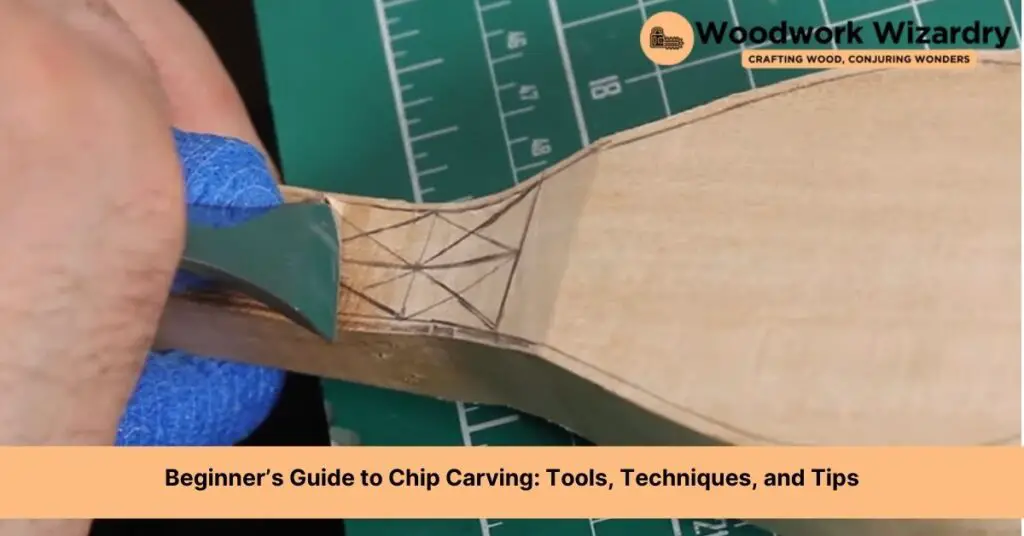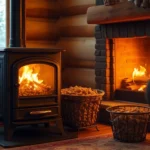We’ve all marveled at intricately designed wooden pieces, wondering about the magic behind their creation. Well, let’s dive into the world of chip carving, a fascinating art form that turns ordinary wood into breathtaking pieces of art. It’s not just about cutting wood; it’s about creating patterns, textures, and designs that captivate and inspire.
At its heart, chip carving involves removing small chips of wood with a knife or chisel to create stunning decorative patterns. Whether you’re a seasoned artist or a curious beginner, understanding the basics of chip carving can open up a whole new world of creativity. Join us as we explore the delicate dance of blade and wood, where every cut is a stroke of beauty.
Understanding Chip Carving
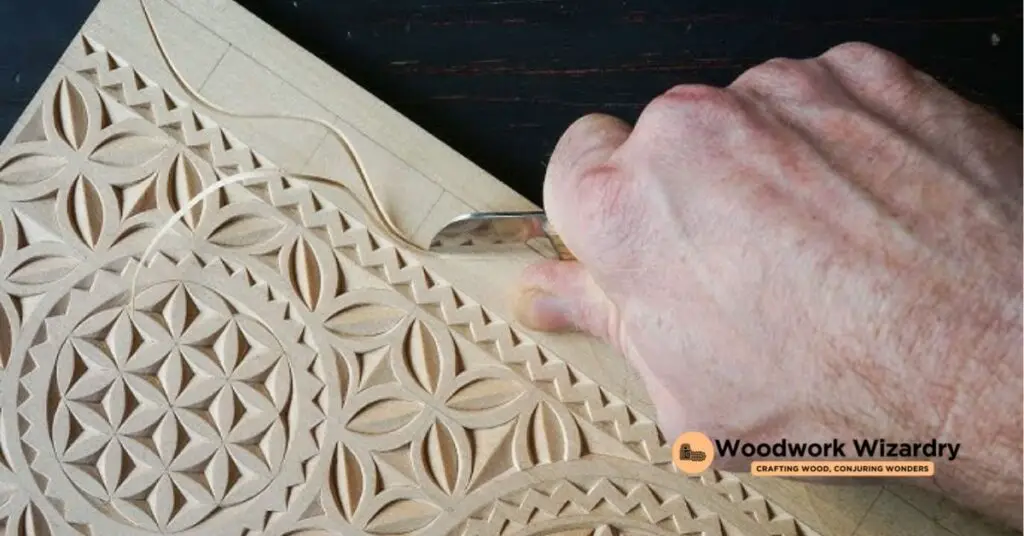
In chip carving, we embark on a journey that beautifully blends precision with artistic expression. This method primarily uses two tools: a chip-carving knife and a chisel. The choice between these tools depends on the intricacy and size of the design we aim to achieve. Chip-carving knives, with their small, pointed blades, are perfect for delicate cuts that form intricate patterns. Chisels, on the other hand, allow us to remove larger chips of wood, ideal for creating bold, geometric designs.
The essence of chip carving lies in its basic cuts – the single, straight cut, and the triangular cut. By mastering these cuts, we can combine them to form complex and stunning patterns. The single, straight cut gives us the freedom to etch fine lines and details into the wood, while the triangular cut involves removing a tiny wedge of wood to create depth and shadow, enhancing the visual appeal of the piece.
Materials play a substantial role in chip carving. Basswood, with its soft, fine grain, proves to be the most popular choice among carvers due to its ease of cutting and smooth surface. This wood’s forgiving nature makes it an excellent option for beginners, offering a satisfying carving experience without the frustration of dealing with harder wood types.
The design process is as crucial as the carving itself, requiring thoughtful planning and creativity. Patterns range from geometric shapes, which are symmetrical and repeat in a defined sequence, to free form designs that embody natural motifs and curves. The beauty of chip carving shines in the versatility of patterns it can produce, catering to both traditional and modern aesthetics.
As we continue to explore the technique of chip carving, we’re reminded of the importance of patience and practice. With each chip we remove, our skills sharpen, and the bond between the carver and the wood deepens, allowing us to create pieces that are not only visually captivating but also full of personal significance.
Tools and Materials Required for Chip Carving
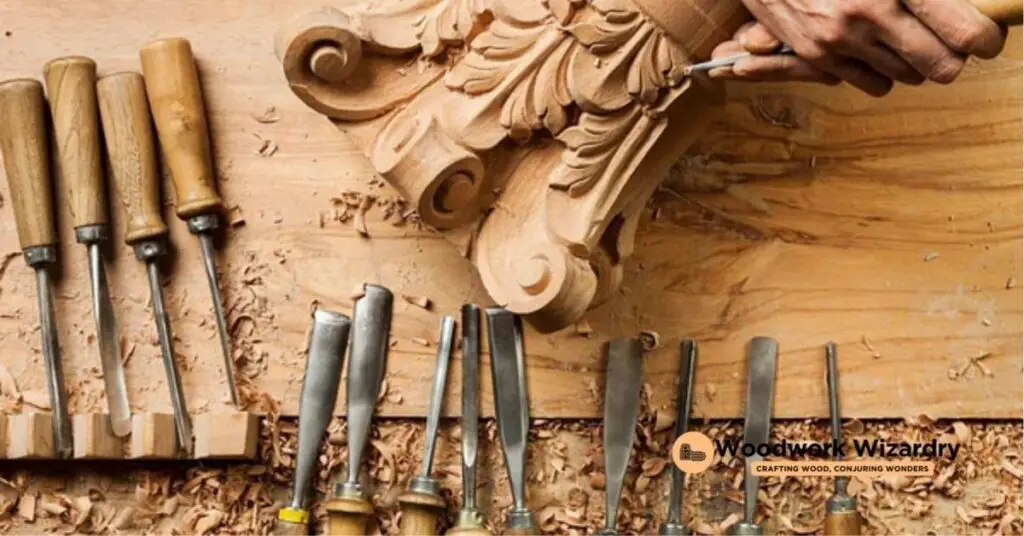
Chip carving, an expressive and precise form of woodworking, requires a specific set of tools and materials. These essentials help in rendering intricate patterns and designs on wood. Diving into the details, we’ll explore the primary tools and materials every chip carver needs to begin their journey.
Tools for Chip Carving
- Chip Carving Knives: The cornerstone of chip carving, these knives have short blades designed for making precise cuts. Typically, a set includes a standard chip carving knife for general use, a stabbing knife for detailing, and sometimes a skew knife for creating angled cuts.
- Chisels: For removing larger chips or for working on stubborn grains, chisels become handy. They come in various widths, allowing for a range of chip sizes.
- Sharpening Tools: Keeping knives and chisels sharp is crucial for clean cuts. A honing stone, strop, and honing compound ensure tools maintain their edge.
- Tape Measure and Ruler: For precise measurements and ensuring symmetry in designs, a tape measure and a clear ruler are invaluable.
- Pencil and Eraser: Sketching designs onto the wood before carving is essential. A pencil with a fine tip allows for detailed drawing, and a quality eraser ensures any mistakes are cleanly removed.
- Basswood: As mentioned, basswood is the preferred material for beginners due to its soft, homogeneous texture. It minimizes the risk of unexpected chipping and allows for smoother cuts.
- Butternut and Mahogany: For those seeking variety, butternut and mahogany are excellent options. Butternut offers a similar softness to basswood with a more pronounced grain, while mahogany, being harder, presents a challenge but rewards with rich hues.
- Paper and Transfer Tools: To transfer designs onto wood, graphite paper and a stylus or ballpoint pen are needed. This method ensures accuracy in transferring intricate patterns.
- Finish: Once the carving is complete, applying a finish enhances the wood’s natural beauty and protects the carving. Common choices are water-based polyurethane, linseed oil, or wax.
Techniques and Patterns in Chip Carving
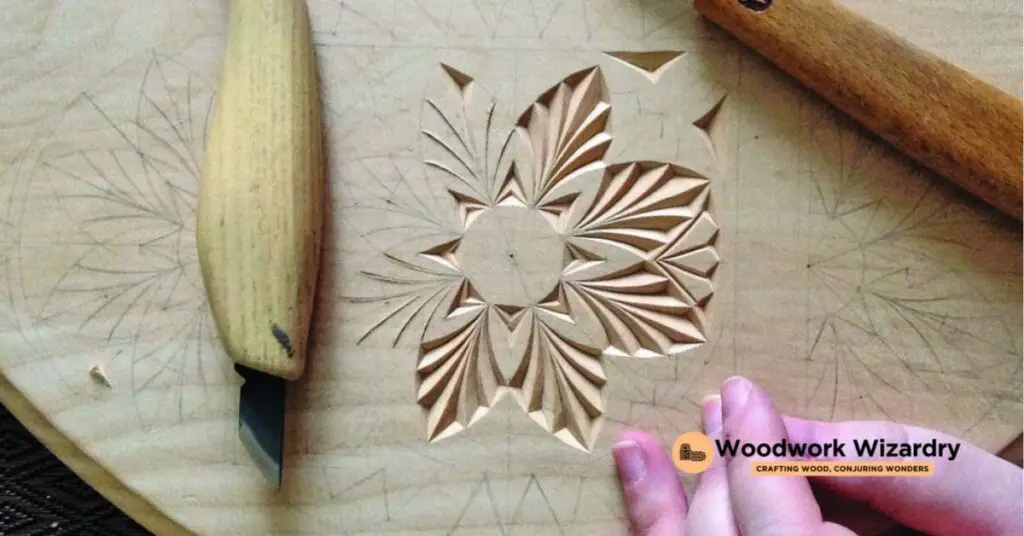
Transitioning from the tools and materials pivotal in chip carving, we delve into the techniques and patterns that breathe life into wood, transforming it into awe-inspiring artworks. Mastering these methods opens up a world of creativity and expression, regardless of one’s skill level.
Starting with techniques, we highlight three fundamentals. First, the stab cut, where we place the knife vertically and push down into the wood, creates a distinctive point pivotal for intricate designs. Next, the slice cut, involving the knife blade’s movement parallel to the wood surface, is perfect for creating smooth, curved lines. Lastly, the pyramid cut, combining two angled cuts meeting at a point, forms the basic triangle shapes central to chip carving patterns.
Patterns in chip carving are both vast and varied, offering something for every carver. Common patterns include geometric, free-form, and lettering. Geometric patterns rely on precise shapes like triangles, squares, and circles, creating a symmetrical aesthetic. Free-form patterns break away from the rigid structure of geometric designs, drawing inspiration from nature, with flowers, leaves, and vines being popular motifs. Lettering, on the other hand, allows for personalization of carvings, with each letter shaped meticulously to add a unique touch to the piece.
Beyond these basics, chip carvers often develop their unique patterns, intertwining traditional motifs with personal creativity. This blend of technique and pattern choice results in truly one-of-a-kind pieces, emphasizing chip carving’s beauty and versatility.
In essence, the combination of stab, slice, and pyramid cuts, together with an eclectic mix of geometric, free-form, and lettering patterns, equips carvers with the ability to create stunning works of art. Each piece reflects the carver’s skill, vision, and dedication to this timeless craft.
Benefits of Chip Carving
After mastering the various techniques and patterns of chip carving, carvers find themselves enjoying multiple benefits that extend beyond the creation of beautiful art pieces. Here, we delve into the advantages that make chip carving a rewarding endeavor for artisans of all levels.
Enhances Creativity and Skill Development
Chip carving offers an excellent platform for both novice and experienced carvers to hone their skills. As carvers experiment with different patterns and designs, they unlock their creative potential, pushing the boundaries of what can be achieved with a piece of wood and a carving knife. Over time, practitioners develop a keen eye for detail and an improved artistic vision, enhancing their overall skill set.
Provides Therapeutic Benefits
Engaging in chip carving can have a calming and therapeutic effect. The focused nature of the work requires concentration and mindfulness, helping carvers to detach from daily stresses and achieve a state of meditative relaxation. Many find this aspect of chip carving to be highly beneficial for mental health.
Fosters a Sense of Accomplishment
Completing a chip carving project, from the initial design to the final piece, instills a strong sense of accomplishment and pride in one’s work. This sense of achievement is not only gratifying but also boosts confidence, encouraging carvers to tackle more complex and challenging projects.
Encourages Community and Sharing
The chip carving community is known for its willingness to share knowledge, techniques, and inspiration. Carvers often engage in workshops, online forums, and exhibitions, fostering a sense of camaraderie and belonging. This community aspect provides a support system that is invaluable for learning and growth in the craft.
Offers Versatility in Projects
Unlike other forms of woodworking, chip carving is versatile and can be applied to a wide range of projects. Carvers can decorate furniture, create standalone art pieces, or personalize items like boxes and ornaments. This versatility keeps the craft interesting and allows carvers to explore various applications of their skill.
In exploring the benefits of chip carving, it’s evident that this craft not only allows for artistic expression but also contributes to personal development and well-being. Carvers enjoy the process as much as the outcome, making chip carving a uniquely fulfilling artistic endeavor.
Learning Resources for Beginners
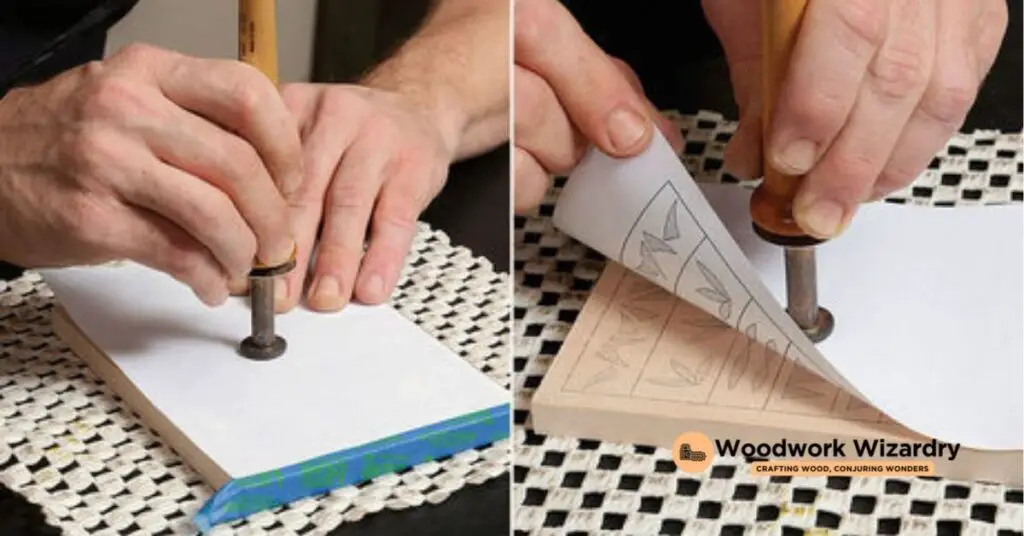
Transitioning from the foundational knowledge of chip carving tools, techniques, and its myriad benefits, we now delve into valuable resources for beginners eager to embark on their chip carving journey. Whether one’s interest lies in intricate designs, enhancing creativity, or exploring therapeutic crafts, the availability and accessibility of quality resources can significantly aid in skill development and project success.
- Books and eBooks: These offer comprehensive guides that start from basic techniques to more advanced patterns. Titles like “The Complete Guide to Chip Carving” by Wayne Barton provide a thorough introduction to tools, wood selection, and mastering chip carving patterns. Such resources serve as an excellent foundation that one can continually refer back to.
- Online Courses and Video Tutorials: Platforms like YouTube and Udemy boast an array of tutorials tailored for beginners. These visual guides cover everything from setting up your workspace to executing complex designs, catering to varied learning styles. Look for instructors known for their expertise in chip carving, as they often share invaluable tips and tricks.
- Workshops and Classes: For hands-on learning, local workshops and classes provide direct mentorship and the camaraderie of fellow beginners. Community centers, art schools, or craft stores often host sessions led by experienced carvers. This setting not only enhances learning but also fosters a sense of community among enthusiasts.
- Online Forums and Social Media Groups: Joining chip carving communities online can be incredibly beneficial. Platforms such as Reddit or Facebook Groups offer a space to share work, ask for feedback, and receive encouragement. Moreover, it’s a great way to stay updated on trends and connect with fellow carvers, providing both support and inspiration.
- Magazines and Journals: Publications dedicated to woodworking and carving, like “Chip Chats,” offer articles, patterns, and insights into the chip carving world. They spotlight artists, provide project ideas, and share techniques, enhancing both knowledge and inspiration for beginners.
By leveraging these resources, beginners in chip carving can gain the knowledge, skills, and confidence needed to create beautiful, precise work. The journey from novice to skilled artisan becomes smoother with the help of detailed guides, visual aids, practical experience, community support, and continuous learning opportunities.
Conclusion
We’ve journeyed through the intricate world of chip carving together exploring the essentials from tools and techniques to the vast array of patterns that breathe life into wood. It’s clear this art form isn’t just about creating beautiful objects but also about the personal growth and community it fosters. With the abundance of resources available to guide us we’re more equipped than ever to carve our path in this craft. Whether we’re just starting out or looking to refine our skills there’s always something new to learn and a project that challenges and excites us. Let’s keep chipping away not just at wood but at the boundaries of our creativity.
Related Posts:
- Can You Put a Longer Bar on Your Chainsaw? Compatibility & Installation Guide
- Step-by-Step Guide: How to Adjust Chainsaw Carburetor for Optimal Performance
- Ultimate Guide: How to Clean Your Chainsaw Carburetor for Peak Performance
- Safe Hedge Trimming: How to Cut Hedge with Chainsaw & Avoid Mistakes
- Ultimate Guide: How to Measure Chainsaw Bar Chain for Optimal Use
- How to Start a Poulan Chainsaw: A Step-by-Step Guide
- Understanding Chain Pitch: Essential for Smooth Machinery Operation
- Beginner’s Guide to Chip Carving: Tools, Techniques, and Tips

